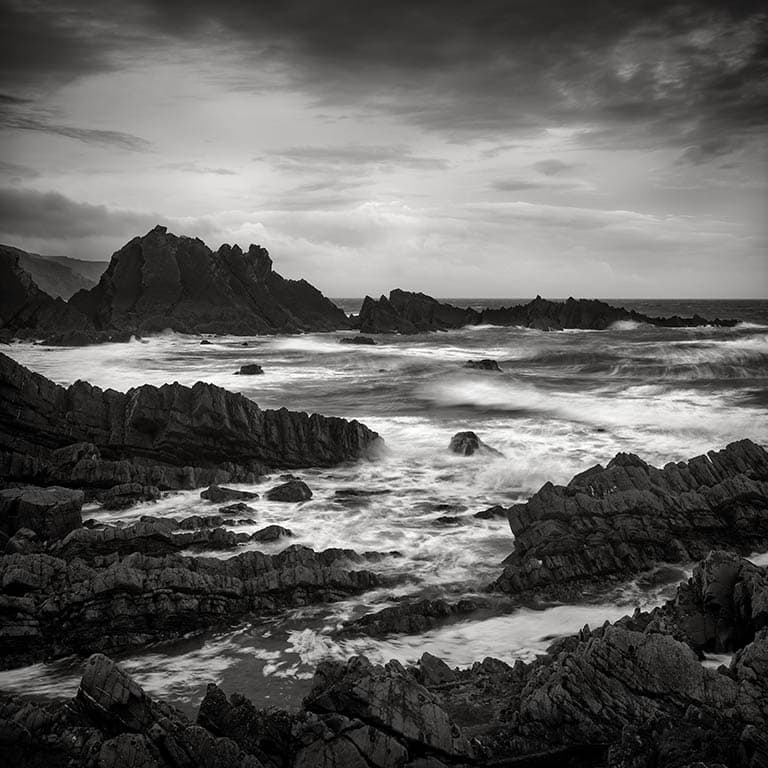It was as an enthusiastic member of the Fujiholics (later rebranded as Fotoholics) group that we first came across the work of Matt Walkley, a dedicated and talented photographer, who is particularly skilled at landscape work. He would later go on to become the runner-up in our inaugural Rising Star Bursary Award, which is currently on hold due to Covid restrictions.
We caught up with Matt via video call to hear more about his impressive body of work to date and find out more about his intriguing processes. Like many before him, Matt was initially inspired by arguably the grandfather of landscape photography, Ansel Adams, whom Matt read about one day in a bookshop.
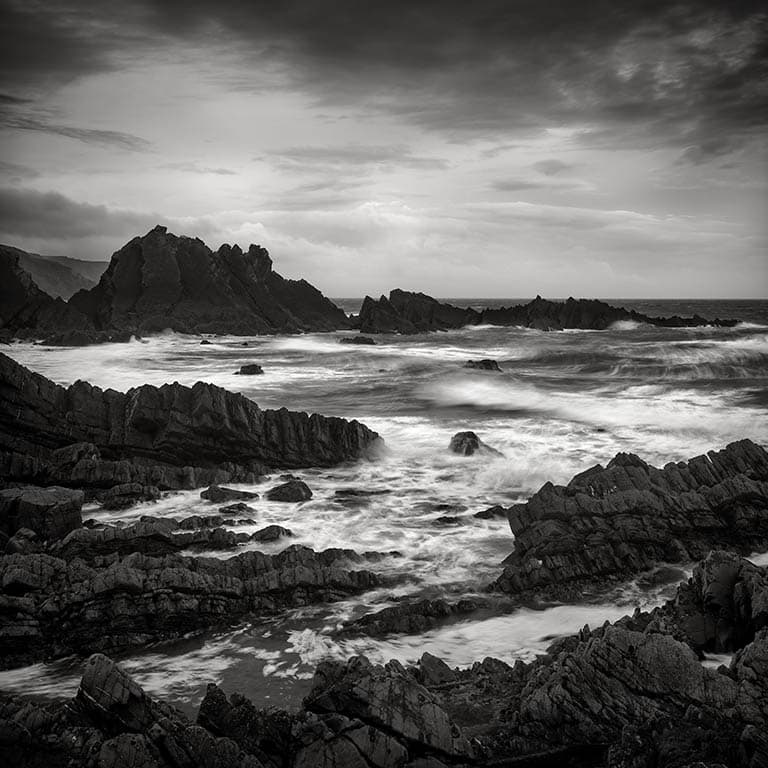
Hartland Quay on the North Coast of Devon. Leica M10 and 28mm Elmarit
Relative newcomer
Realising photography would be an easier way to express his creativity than drawing, he started going out with a camera with the specific intention of making photographs, rather than it being just about snapshots and family pictures. Considering the skill-level which is demonstrated in his work, we were surprised to discover that this took place relatively recently, with Matt only fervently pursuing his hobby since 2014.
Initially, he was worried it might turn into one of his passing fads, but so far it’s stuck, and doesn’t seem to be going anywhere. “It’s just part of life now, and I don’t ever see myself not being with the camera. It wasn’t until I saw this book and I started taking a serious interest in it and studying things like composition and light in different photographic techniques, but because that first inspiration was Ansel Adams, I became intrigued by what he used to do in the darkroom.’
It was always the end-goal to create prints from his work, Matt explains. That has evolved from a simple household inkjet printer to the process he uses now, which mainly involves creating a negative from digital files. First of all he experimented with shooting film and setting up a darkroom at home, to get an idea of what he wanted to do.
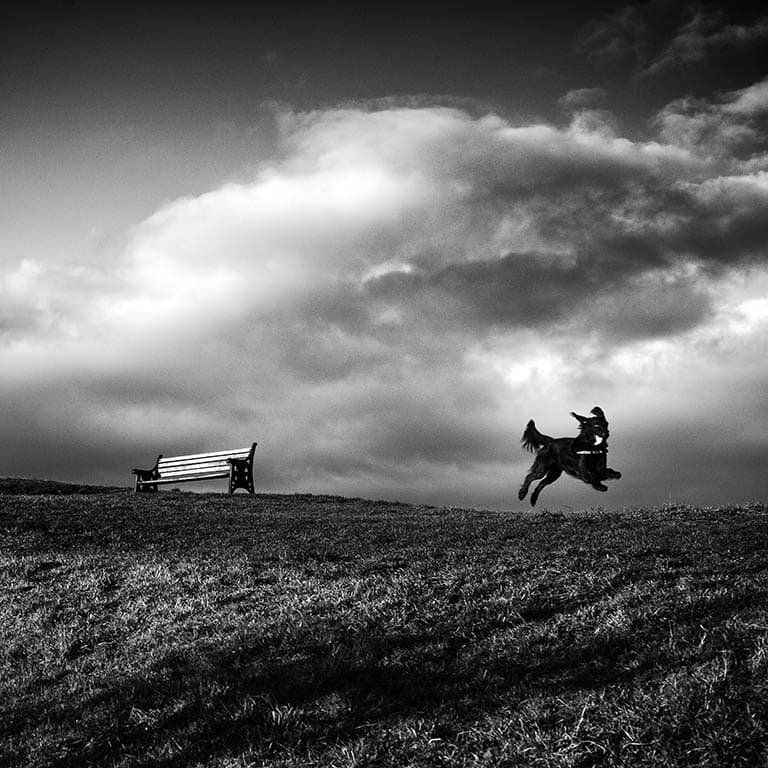
Christmas Eve walk, 2020. Leica M10 Monochrom and 50mm Summicron
Trial and error wins through
Although still using film occasionally now, his current set-up is very much digital focused at the point of capture, switching to analogue to create a silver gelatin print. ‘I’d like to say the process is straightforward,’ he says, ‘but it has taken me a couple of years to get it to the point where it is.’
Having spent so long perfecting his printing process, he doesn’t want to divulge the exact details, but tells me the essence of it. A digital file is inverted and flipped, then printed to create an internegative. When it’s placed on the photographic paper, a positive image is created, the right way up.
It’s not quite as simple as that though – with different contrast curves needing to be utilised to create the look which Matt is after. ‘It’s been trial and error – poking this, prodding that,’ he explains. ‘I’ve now got to the stage where I can take a positive image and edited file, apply the adjustments that I found works, and then make a print from what is essentially a giant negative.’
For Matt, it’s the act of printing his work out which has had one of the biggest impacts on the quality of his work. ‘I think that I’ve learned to notice things more once it’s in a printed image. Whether that’s composition, or even in the way that it has been edited. All of that helps to give you a better understanding of your own photography. I think photography is quite a slow learning curve to start off with, which gradually goes up and you get to a point where you can start making decisions that
affect your work more.’

Loch Elvie, Scotland. Minutes before wind and hail forced a hasty retreat
Head on the clouds
As a busy father-of-two and business owner, much of Matt’s photography is dictated by how much time he has to spare. ‘Most of the time, I look out the window – if the clouds are dark and threatening and it suits my sort of style – and if I’ve got time – then I’ll nip out and take photographs.’
Living in Weston-super-Mare, he’s close to some excellent landscape locations, such as the Mendip Hills, which are just a 40-minute drive away. Further afield, favoured locations include the North Devon coast, and Scotland. He loves rugged coastlines, and changeable weather, of which both locations have an abundance – he says he’s not really a sunrise/sunset photographer, and is pleased if it’s dark, cold and damp.
Crucially, as an amateur who is doing this only for fun and the love of photography, he’s in no rush to produce anything. ‘I’ve seen people go out and spend six months photographing, then they make a book. That’s not going to happen for me. I’ll look back in maybe 20 years’ time and pick out images that are good enough to go into a book. As I’m not financially driven, it’s all just about being able to go out, have a little bit of time to myself.
‘I don’t have any hopes or aspirations of becoming a famous photographer or anything like that,’ he continues. ‘I do it because I love photography, and I love making prints. If when I’m dead and gone, people see my photographs and think, oh he was quite a good photographer, then wonderful, but it’s not what drives me.’
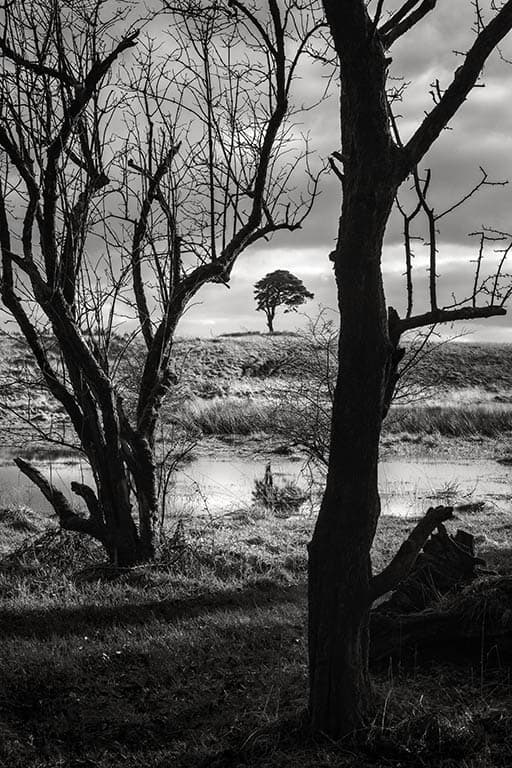
A tree that is the subject of a long-term project. Leica M10 Monochrom
Leica fan
Shooting primarily with Leica M cameras – both film and digital – Matt is attracted to the simple, yet tactile, nature of using such a system. Such is his love for black & white that his main camera is the Leica M10 Monochrom, a digital rangefinder only capable of recording images without colour.
‘It’s a beautiful camera,’ he says. ‘The images that come from it are just incredible, they really are.’ Although he has a set of lenses for the M system – a 28mm, 35mm, 50mm and 135mm – he says it’s the 50mm which he uses for around 90% of his imagery. ‘I don’t tend to shoot with wideangle lenses very often, 50mm just seems to fit the way that I see things,’ he explains.

Matt’s darkroom at home in Somerset
The darkroom he’s talking to me from is a recently completed project, a by-product of extra time – and a lack of space – during lockdown. His first darkroom was set up inside the house, but with his wife needing the space for working from home, his long-held ambition to set up a proper space in the garage was finally fully realised in September 2020.

Portland Bill Lighthouse, Dorset, in the early hours of
the morning
People person
‘Having a darkroom has been a blessing during lockdown; I think the only thing I’ve found is that I’ve spent more time in here than going out taking photographs – even when such opportunities have arisen, I’ve thought no, I’ll make some prints instead.’
Behind his desk, is a wall which is lined by black & white prints from some of the biggest names in photography – Martin Parr, Tom Stoddart, John Downing, Brian Griffin, to name but a few. Interestingly however, there are no landscape photographers on display.
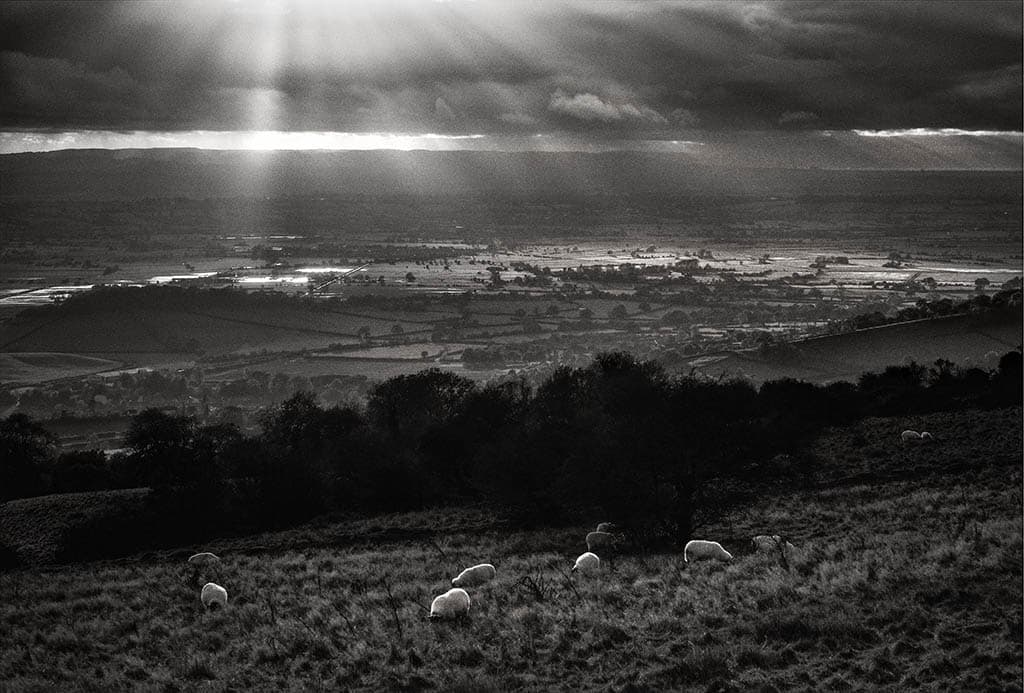
Overlooking the Somerset Levels shortly before sunset. Leica M10 Monochrom and Leica 135mm Elmar
For somebody who has built up an excellent collection of landscape work, it’s interesting to note that it’s people shots which he admires and finds inspirational. ‘I think it takes more skill,’ he admits, ‘plus a lot more sensitivity to be able to photograph people well.
While we were busy and life was normal – pre-lockdown – it was nice for me to get out and away from everybody in the landscape. But I think because of the situation, it’s made me appreciate people more, and realise how much I do like being around people, watching life go on as it does.
I think things are therefore shifting a bit with my photography, and I’m certainly becoming more interested in the street and documentary side of things.’
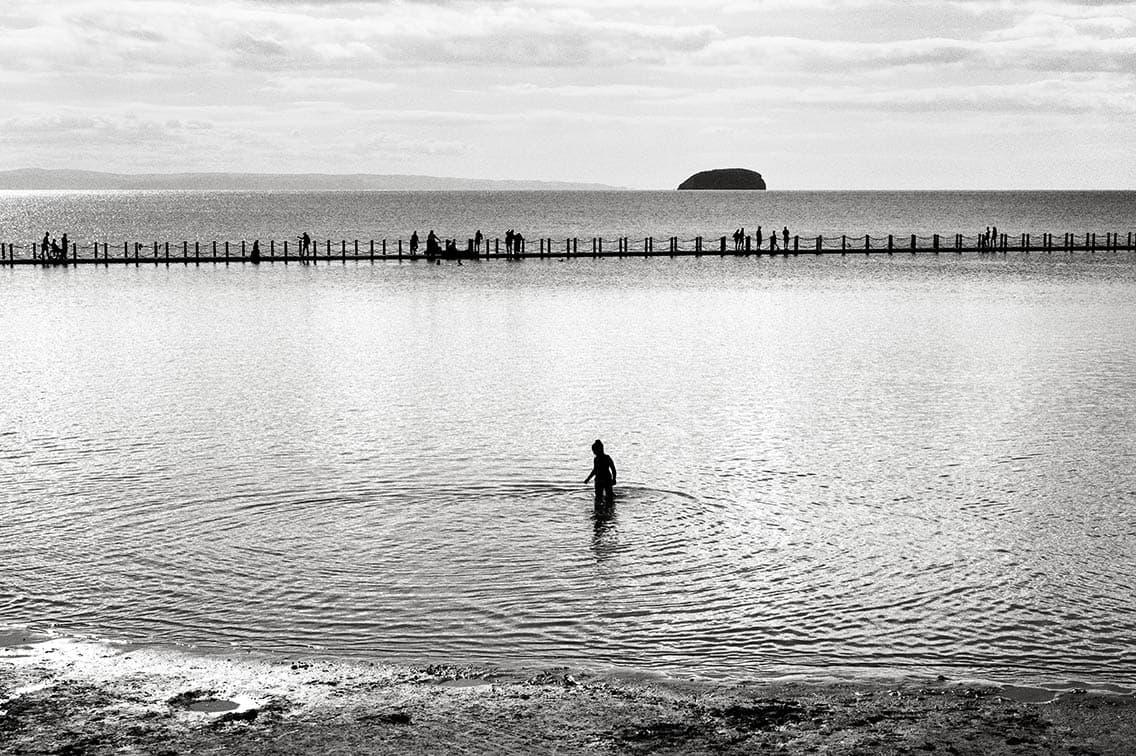
Marine Lake, Weston Super Mare. Leica M10 with 50mm Summicron
Exhibition plans
It’s actually a well-known street photographer – and original founder of the Fotoholics group – Matt Hart, that Matt cites as arguably his biggest inspiration. ‘I met him when I’d been photographing for about three years, when he was doing a workshop in Bristol. We got on really well and have since built up a really good friendship to the point where we probably talk on a daily basis.

Beautiful light near Bruton in Somerset. Leica M10 Monochrom and 50mm Summicron
He’s given me a huge amount of guidance, we share a lot of the same views on photography and how important it can be. It’s been nice to have somebody with his knowledge of photography, but also his connections with the industry – if I hadn’t met Matt then I probably wouldn’t be sitting here talking to you today.’
As the end of lockdown looks tantalisingly close, Matt is thinking ahead to future travel plans, which should mean he is able to add some new work to his portfolio. Further ahead than that, he says he’d also like to have an exhibition. ‘I’m not afraid to do something like that,’ he explains, ‘but I don’t think I’ve got a strong enough selection of images and prints to be able to do that. It might be me being overly self-critical, but I think when I know the time is right, then I’ll do it.’

Matt Walkley
Matt Walkley is a self-taught amateur photographer and printer, based in the south west of England. He splits his time between his business, his family and his photography. He regularly updates his website, where you can find details about his work, darkroom and more besides. Visit his website to discover more.

